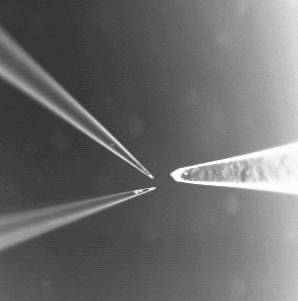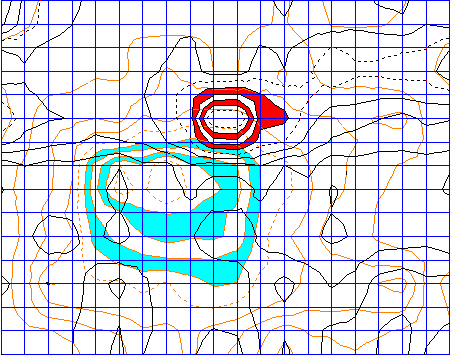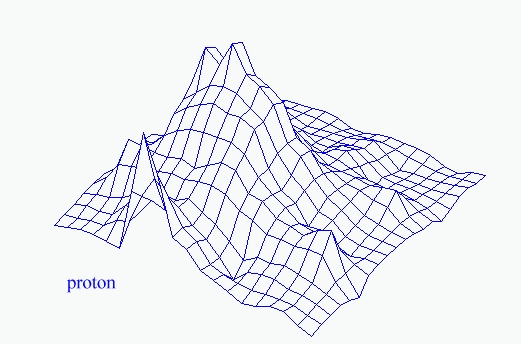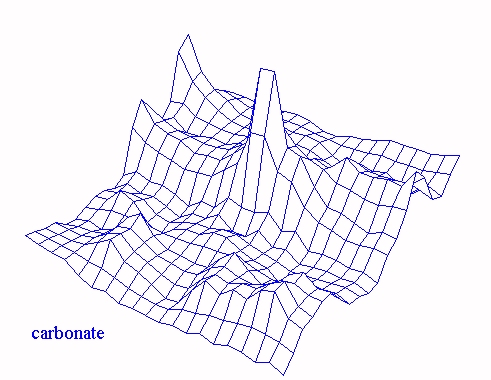
Proton and carbonate electrodes, placed 60um apart on a dual micromanipulator, were oscillated in front of a Na2CO3 source (tip diameter of 200um). Collected data shown below.
Proton (aqua) and carbonate (red) gradients were recorded with the carbonate having a smaller, more distinct peak that diminished quicker than its proton counterpart. H+ ions are known for their rapid diffusion, resulting in a larger and more dispersed gradient. Although it appears the peaks of the gradients have different X and Y coordinates, once the 60um separation is accounted for, these peaks are superimposed on one another.


Contour plots of an 11x11 grid scan of
an artificial NaCO3 source using proton (above) and carbonate (right)
electrodes.
Note the characteristic diffuse proton gradient, while the carbonate gradient
is very defined. Also, due to the movement of the probe over large distances
(400 um), there is some noise on the perimeters of the scan.
